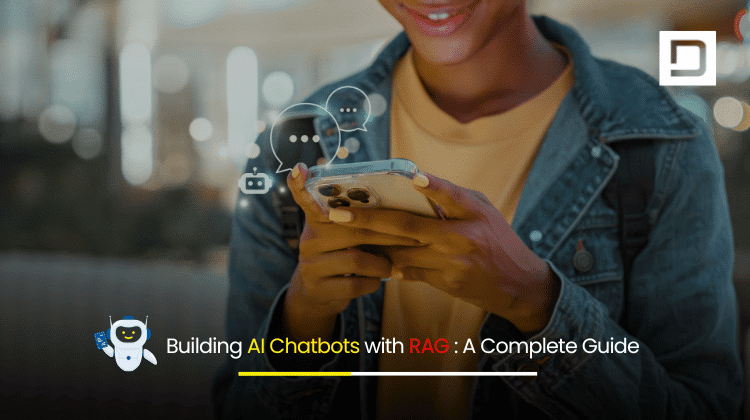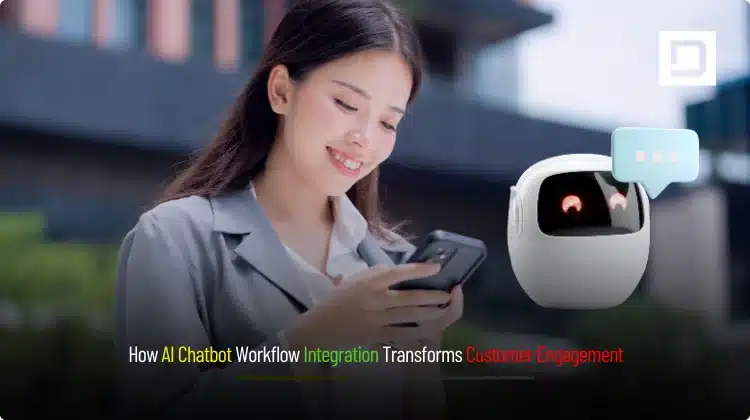How AI Chatbot Workflow Integration Transforms Customer Engagement
Modern customers expect answers that are fast, relevant, and human-like, no matter the channel. The surest way to deliver that-without ballooning headcount-is to connect every step of your support, sales, and marketing journeys into one coherent system. This is exactly what AI chatbot workflow integration achieves. By bringing your CRM, ticketing, knowledge bases, payment gateways, analytics, and communication platforms into a single orchestration layer, AI chat flows stop being isolated scripts and start acting like a responsive, goal-oriented engine. In this article, Depex Technologies explains how AI chatbot workflow integration transforms customer engagement, what components matter most, where the ROI shows up, and how to implement it safely and quickly.
From the very first paragraph, let’s anchor the core idea for discoverability and clarity: AI chatbot workflow integration is the connective tissue that turns a smart conversational front end into an end-to-end, self-improving customer experience. When your conversations tap the right data, call the right services, and escalate at the right time, satisfaction climbs, conversion increases, and costs decline-simultaneously.
Why “workflow integration” is the unlock
AI chat experiences fail most often not because the model cannot generate words, but because the conversation can’t complete actions. A greeting that recognizes a user’s name is nice, yet it doesn’t resolve a missing order, reset a password, rebook a flight, or upgrade a plan. AI chatbot workflow integration solves this by connecting the assistant to business logic and systems so it can perform tasks, not just talk about them. When a bot can authenticate the customer, fetch order history, initiate replacements, create tickets with full context, and follow up proactively, the conversation becomes a complete service loop.
Moreover, integrated workflows enable precision. The assistant can consult the right policy, apply the latest pricing rule, or hand off to a human with every relevant detail attached. This reduces repetition, shortens time to resolution, and creates a feeling of competence that customers remember.
The essential building blocks
A well-designed AI chatbot workflow integration uses a handful of interoperable components that reinforce each other.
First, there is conversation understanding. Natural language understanding, entity extraction, and intent detection remain crucial, but they are now boosted by retrieval mechanisms that surface the latest policy docs, product specs, and account insights. When your assistant can cite what it knows and act on it, trust rises.
Second, there is orchestration. Think of orchestration as the conductor that routes each turn of dialog to the right tool. It decides whether to query the CRM, call an order-management API, schedule a callback, or trigger a knowledge search. Without this orchestration layer, conversations become dead ends.
Third, there is identity and context. By recognizing the user, preserving state within a session, and remembering preferences across sessions, the assistant can skip redundant questions and personalize offers. It can also respect constraints like language, region, and compliance requirements.
Fourth, there is the execution layer. This includes connectors to your CRM, help desk, payment processor, marketing automation tool, inventory system, and appointment scheduler. A truly integrated workflow is capable of reading and writing to these systems, not just reading.
Finally, there is analytics and continuous improvement. Integrated bots log every step. They capture intent-level metrics, task completion, deflection rates, customer sentiment, and handoff quality. With these signals, you can refine prompts, expand coverage, and identify high-value automations.

Orchestration in practice: from “answering” to “doing”
Consider a common eCommerce scenario. A customer asks, “Where is my order?” A non-integrated chatbot might provide generic tracking guidance or a link to a courier. An integrated one authenticates the customer inside the chat, pulls order data, and shows live tracking. If the package is delayed beyond your service promise, the assistant applies a compensation policy, issues a partial refund or coupon, and emails the receipt-all without losing the conversational thread.
Another example is plan upgrades. A user says, “I need more storage.” With workflow integration, the assistant checks entitlements, applies pricing rules for the user’s region, confirms identity, processes payment, and updates the plan instantly. Moreover, it schedules a check-in message to confirm the upgrade worked, closing the loop.
The omnichannel advantage
Customers move between web chat, WhatsApp, iMessage, email, voice, and in-app messaging. When your AI chatbot workflow integration spans these channels with a unified orchestration and identity layer, context travels with the user. Someone who starts in web chat can pick up on WhatsApp; an agent who later joins sees the conversation history alongside the actions already taken. This continuity is essential for high satisfaction scores because it eliminates repeated explanations.
Beyond continuity, omnichannel integration multiplies the number of moments where your brand can be useful. An order-ready notification can include a quick-reply to reschedule pickup. A failed payment email can contain a secure link to try a different method. A travel app can send a proactive alert that the gate changed and offer to display directions immediately, making the experience feel attentive rather than reactive.
Personalization that respects privacy
Personalization becomes more intelligent when integrated with data policies. Rather than vacuuming everything, the assistant can request only the attributes it needs to perform a task and discard them when finished. Preferably, your orchestration layer enforces data minimization, regional data boundaries, opt-outs, and audit trails. This approach keeps you compliant while still tailoring answers to the user’s history and preferences.
Furthermore, consent-aware personalization allows the assistant to suggest next best actions. If a customer consistently prefers weekend deliveries, the bot proposes those slots first. If the customer browses premium tiers frequently, the bot offers a time-limited upgrade with clear value and transparent billing.
Analytics that measure what matters
Integrated chat workflows generate new datasets that legacy support dashboards rarely capture. Instead of counting generic sessions, you can measure task-level completion: password reset succeeded, return label generated, replacement initiated, appointment booked, ticket created with full context. Additionally, sentiment analysis, hold time during handoffs, and success rates per channel offer precise tuning opportunities.
When these metrics feed back into your prioritization, teams move from guesswork to outcomes. You’ll learn which intents deserve automation, which need better prompts, and which require policy changes or new product capabilities. Over time, the assistant stops being a cost center and becomes a performance multiplier.
When AI meets your knowledge: retrieval and updates
Knowledge changes constantly-pricing, policies, SKUs, and eligibility rules evolve. AI chatbot workflow integration shines when the assistant draws from a canonical knowledge base and a retrieval mechanism that fetches the latest facts at the moment of answering. Even better, when the bot discovers missing or outdated content, it can flag those pages for review and propose drafts for approval. This persistent alignment with the truth reduces escalations and legal risk while preserving a consistent brand voice.
Human-in-the-loop that feels natural
No matter how advanced your AI becomes, some conversations need humans. Integration ensures handoff quality. The assistant should pass the conversation transcript, structured intent, user identity, and all actions already taken to the agent, so the user never has to start over. Meanwhile, agents can push snippets or macro responses back to the assistant for future use. This reciprocal learning is one of the quiet superpowers of integrated systems.
Security, governance, and compliance
Security is not a bolt-on; it is an architectural choice. Good workflow integration means single sign-on for internal tools, secure credential storage for API keys, role-based access to actions, and encryption in transit and at rest. It also means audit trails for every step the assistant takes and guardrails that prevent unauthorized actions. If a workflow touches payments, it should respect PCI guidelines. If it processes health information, it must obey relevant regulations and logging standards. By baking these controls into the orchestration layer, you enable speed with safety.
Industry snapshots
Different industries realize value in different ways, but the pattern remains consistent: connect conversation to action, reduce friction, and keep humans focused on high-value moments.
In retail and eCommerce, integrated bots manage order status, returns, exchanges, sizing questions, and post-purchase care. They trigger proactive updates when shipments are delayed and offer personalized bundles when shoppers compare items.
In financial services, the assistant guides KYC steps, helps reset credentials, books appointments with relationship managers, and explains product differences with compliant language. Where regulations require, the assistant escalates to a human while preserving evidence of the conversation.
In healthcare, integrated chatbots handle appointment scheduling, insurance verification, pre-visit forms, and basic triage before handing off to clinicians. They can also send post-visit care reminders that reflect the care plan stored in the EHR.
In travel and hospitality, assistants help with itinerary changes, seat selection, loyalty point redemption, and emergency rerouting when disruptions occur. A well-integrated bot can contact multiple vendors behind the scenes without forcing the traveler to juggle calls.
In education and EdTech, they answer admissions questions, guide financial aid steps, provide course recommendations, and connect students to advisors. With permissions, they can even sync learning progress back to the LMS and personalize nudges.
In real estate and property management, assistants qualify leads, schedule viewings, share listings that match preferences, verify documents, and track application status while keeping brokers and applicants updated.
Implementation roadmap: from pilot to scale
A successful rollout proceeds in measured steps that build momentum without risking core operations. Start by defining the top ten tasks that produce measurable value. Password reset, order tracking, returns, subscription changes, appointment booking, and simple billing queries usually make the initial cut. These tasks have clear success criteria and well-documented back-end flows.
Next, map each task to the system of record. Determine the APIs and events required, along with permissions and error handling. Establish authentication and consent flows that are friction-light but secure. Decide how you will verify identity on web chat, mobile apps, and messaging channels. Consistency here prevents later rework.
Then, build your orchestration layer. This might be a purpose-built middleware or a modern event-driven backend. It should translate conversational intents into actions, sequence those actions correctly, and return responses that are clear and friendly. Keep your prompts modular so they can adapt as knowledge evolves.
After that, design monitoring and analytics. In addition to traditional metrics like first response time, track task completion, containment (how many conversations end without human escalation), and customer effort scores. Identify fall-through points where users bail, and fix those with targeted prompt changes, better knowledge, or improved business rules.
Finally, run a phased launch. Begin with one channel, one region, or one product line. Gather feedback from customers and agents, tune your models and flows, then expand coverage. This iterative approach maintains quality as you scale.
Build versus buy, and the hybrid path
Some organizations have strong engineering teams and choose to build orchestration and connectors in-house. Others prefer a platform approach with pre-built integrations. Many find a hybrid path works best: use a platform for speed and reliability, but customize high-value flows internally. The decisive factor is control over data, cost to change, and your appetite for maintaining integrations over time.
If you do choose a platform, insist on clear APIs, transparent pricing, exportability of conversation data, and configurable governance. If you build, invest early in a modular architecture, event logging, and a testing harness that simulates real conversations end-to-end.
Common pitfalls and how to avoid them
Teams sometimes assume that a clever model compensates for missing integrations. It does not. Without the ability to perform actions, even the best dialog becomes a cul-de-sac. Solve this by prioritizing the integrations that complete your most frequent tasks.
Another pitfall is designing for the happy path. Real users mistype, change their minds, and bring edge-case questions. Your orchestration should anticipate failure modes: timeouts, partial data, conflicting rules, and ambiguous intents. Prepare friendly fallbacks with helpful next steps or clear escalations.
A third pitfall is neglecting the human experience. Agents need tools too. If your handoffs do not pass context, agents will feel sabotaged and customers will feel ignored. Remedy this by integrating your agent console and ensuring shared context flows both ways.
Finally, teams underinvest in knowledge. The assistant is only as accurate as the currentness of its sources. Schedule content reviews, measure missing-answer rates, and treat knowledge freshness as part of your operational rhythm.
The future: agentic workflows, multimodal, and proactive support
AI chatbot workflow integration is moving beyond static flows toward agentic behaviors. Assistants can now decide which tools to call, plan multi-step tasks, and check their work against rules. They are also becoming multimodal, handling images, documents, and voice seamlessly. Imagine snapping a photo of a damaged product, receiving instant eligibility confirmation, and generating a return label-without typing a word. Or consider proactive support that triggers a gentle message when an IoT device reports an error, offering to run diagnostics automatically. These advances will widen the gap between reactive service and anticipatory care.
How Depex Technologies integrates AI chat that actually works
Depex Technologies approaches AI chatbot workflow integration as a product, not a project. We begin with discovery: your goals, top tasks, channel mix, systems of record, and compliance needs. We map your user journeys, identify high-impact automations, and define success metrics that are visible to your leadership.
Next, we establish the orchestration backbone. We integrate your CRM, help desk, commerce stack, billing, email and SMS providers, analytics, and data warehouse. We set up secure credential vaults and role-based permissions so each action the assistant takes is legitimate and auditable.
Then, we build task flows with test harnesses. For each intent—like returns, upgrades, or appointments—we define guardrails, error paths, and handoff criteria. We attach analytics so you can see completion rates and customer effort immediately after launch.
Meanwhile, we connect your knowledge. We identify canonical sources, implement retrieval, and set a cadence for updates. Our content team helps you rewrite policy pages in customer-friendly language that still satisfies legal and operational requirements.
Finally, we train your teams. Agents learn how to collaborate with the assistant and contribute to its improvement. Product and operations teams learn how to ship new automations without breaking existing ones. We leave you with a sustainable system-fast today and adaptable tomorrow.

A quick, narrative snapshot
Imagine a subscription fitness brand facing churn. Members complain about billing confusion and class scheduling friction. Before integration, the bot could answer FAQs but couldn’t change plans, fix invoices, or book classes. After AI chatbot workflow integration, the assistant recognizes the member, verifies identity in-chat, checks their attendance patterns, proposes a lower-cost plan with off-peak classes that fit their routine, processes the change, and books their next week with one confirmation. In a single conversation, billing confusion disappears, plan fit improves, and the member feels seen. This is the power of connected action.
What ROI looks like in real numbers
While every business differs, patterns repeat. First, deflection increases because routine tasks complete automatically. Second, average handling time drops for escalations because agents receive full context. Third, conversion rates rise on assisted upsells and cross-sells because offers are timely and relevant. Fourth, customer satisfaction improves as effort decreases. Finally, your team regains time to solve harder problems and launch new features.
Because your orchestration logs every step, these improvements are measurable. You can see how many returns processed, how many upgrades completed, how many tickets closed by the bot, how many human minutes saved, and how sentiment shifts over weeks. This is the basis for continuous investment rather than one-off experiments.
Bringing it all together
AI chatbot workflow integration transforms customer engagement by unifying conversation, action, data, and learning. It replaces isolated scripts with end-to-end journeys that finish the job. It respects privacy while using context to personalize. It measures outcomes that matter and continuously adapts. And most importantly, it makes your customers feel that your brand is competent, considerate, and quick.
If you are ready to evolve from a FAQ chatbot to a results-driven assistant, the path is clear. Prioritize the tasks that create value, connect them to the systems that power your business, equip your assistant with current knowledge, and close the loop with analytics. The shift from answering to doing is where engagement truly transforms.
Conclusion: build your integrated assistant with Depex
If your goal is to lower support costs while lifting satisfaction and sales, it’s time to integrate your chat workflows. Depex Technologies designs and implements AI chatbot workflow integration that connects to your real systems, secures your data, and ships value fast. We will identify your top tasks, wire them to your CRM and operations stack, add retrieval over your knowledge, and set up analytics you can trust. Then, we’ll expand coverage methodically until your assistant becomes a dependable part of the customer experience-across channels, around the clock.

Talk to Depex Technologies to define your ideal automation roadmap, validate the ROI, and launch an assistant that delivers outcomes, not just answers. Your customers are ready for conversations that get things done. Let’s build that together.






